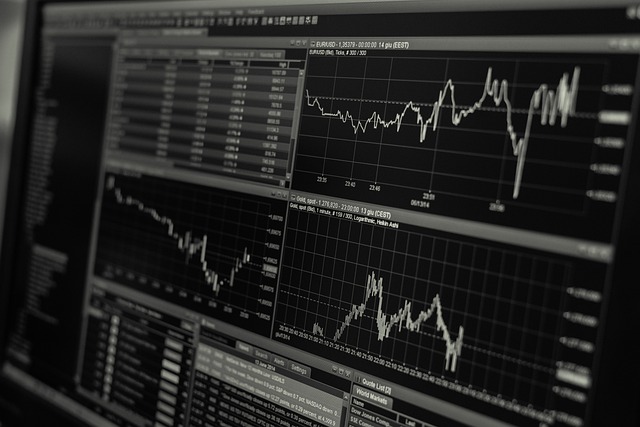Leveraging Artificial Intelligence in Quantitative Trading
The intersection of artificial intelligence and finance has ushered in a new era of quantitative trading, revolutionizing how investors approach market analysis and decision-making. This cutting-edge field combines advanced machine learning algorithms with vast datasets to identify patterns, predict market movements, and execute trades with unprecedented speed and accuracy.

The Evolution of Quantitative Trading
Quantitative trading has come a long way since its inception in the 1980s. Initially, it relied on simple statistical models and basic algorithms to identify trading opportunities. However, as computing power increased and data became more readily available, quant trading strategies grew increasingly sophisticated.
The advent of artificial intelligence and machine learning has taken quantitative trading to new heights. These technologies enable traders to analyze vast amounts of structured and unstructured data, including market data, economic indicators, news sentiment, and even social media trends. By leveraging AI, quantitative traders can now identify complex patterns and relationships that would be impossible for humans to discern.
How AI Enhances Quantitative Trading
Artificial intelligence brings several key advantages to quantitative trading:
-
Pattern Recognition: AI algorithms can identify subtle patterns and trends in market data that human traders might miss. This allows for more accurate predictions of future market movements.
-
Real-time Analysis: AI systems can process and analyze data in real-time, enabling traders to make split-second decisions based on the most up-to-date information.
-
Adaptability: Machine learning models can continuously learn and adapt to changing market conditions, improving their performance over time.
-
Emotion-free Decision Making: AI-driven trading systems are not influenced by human emotions like fear or greed, leading to more consistent and rational trading decisions.
-
Big Data Processing: AI can handle and extract insights from vast amounts of data, including alternative data sources that traditional quant strategies might overlook.
AI-Powered Trading Strategies
Several AI-driven trading strategies have gained prominence in recent years:
-
Natural Language Processing (NLP) for Sentiment Analysis: AI algorithms can analyze news articles, social media posts, and other text-based sources to gauge market sentiment and predict price movements.
-
Deep Learning for Price Prediction: Neural networks can be trained on historical price data to forecast future price trends with impressive accuracy.
-
Reinforcement Learning for Optimal Execution: AI agents can learn optimal trading strategies through trial and error, continuously improving their performance in simulated environments before being deployed in live markets.
-
Genetic Algorithms for Strategy Optimization: These AI techniques can evolve and optimize trading strategies by mimicking the process of natural selection.
-
Time Series Analysis with Recurrent Neural Networks: These specialized neural networks are particularly adept at analyzing sequential data, making them ideal for predicting financial time series.
Challenges and Considerations
While AI-powered quantitative trading offers immense potential, it also comes with its own set of challenges:
-
Data Quality and Quantity: AI models require vast amounts of high-quality data to perform effectively. Ensuring data integrity and relevance is crucial.
-
Overfitting: There’s a risk of AI models becoming too specialized to historical data, potentially leading to poor performance in live trading.
-
Black Box Problem: The complexity of some AI models can make it difficult to understand and explain their decision-making processes, raising regulatory concerns.
-
Computational Resources: Implementing and maintaining AI-driven trading systems often requires significant computational power and expertise.
-
Market Impact: As AI-driven trading becomes more prevalent, it may lead to increased market efficiency, potentially reducing the effectiveness of certain strategies over time.
The Future of AI in Quantitative Trading
As artificial intelligence continues to advance, its role in quantitative trading is likely to expand. Some potential future developments include:
-
Quantum Computing: The advent of quantum computers could dramatically enhance the processing power available for AI-driven trading algorithms.
-
Explainable AI: Advancements in this field could help address the black box problem, making AI-driven trading decisions more transparent and interpretable.
-
Federated Learning: This technique could allow AI models to learn from diverse data sources without compromising data privacy, potentially leading to more robust trading strategies.
-
AI-Human Collaboration: Rather than replacing human traders entirely, AI is likely to evolve into a powerful tool that augments human decision-making in quantitative trading.
Key Insights for Aspiring Quants
-
Develop a strong foundation in both finance and computer science
-
Stay updated on the latest developments in AI and machine learning
-
Gain hands-on experience with popular AI frameworks and tools
-
Focus on data quality and preprocessing techniques
-
Understand the importance of proper backtesting and validation
-
Consider the ethical implications of AI-driven trading strategies
-
Explore interdisciplinary approaches, combining AI with other fields like behavioral finance or network theory
As artificial intelligence continues to reshape the landscape of quantitative trading, it presents both exciting opportunities and formidable challenges. By staying informed about the latest developments and adopting a thoughtful, ethical approach to AI implementation, traders and investors can harness the power of this technology to gain a competitive edge in the ever-evolving world of finance.





